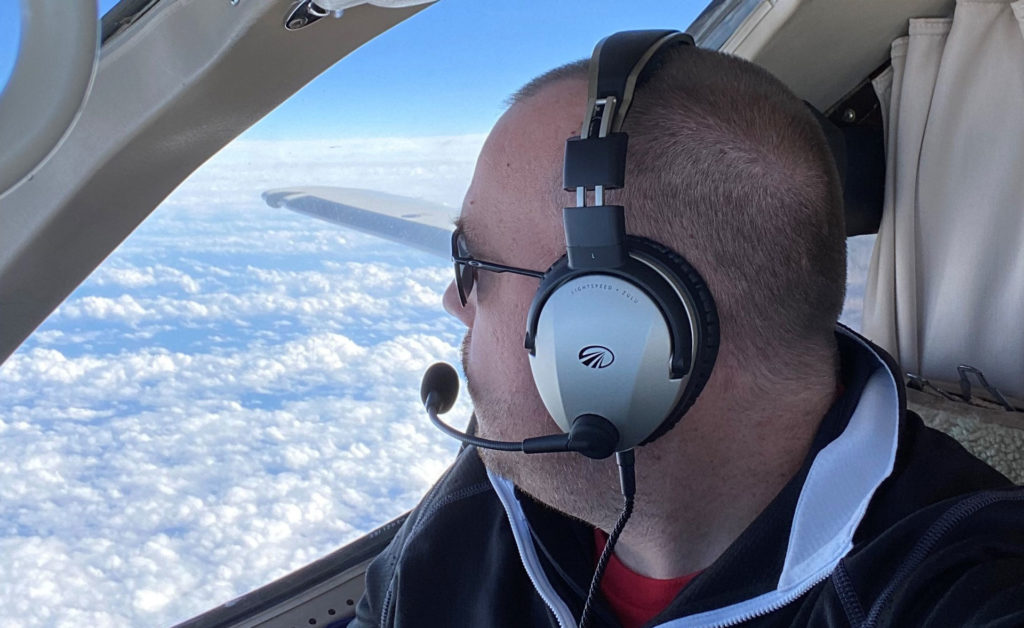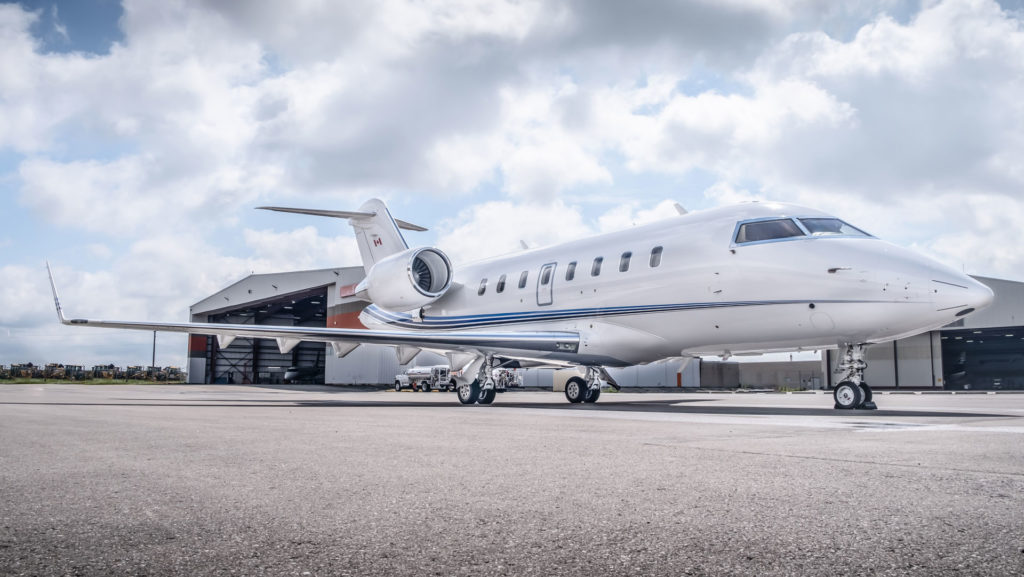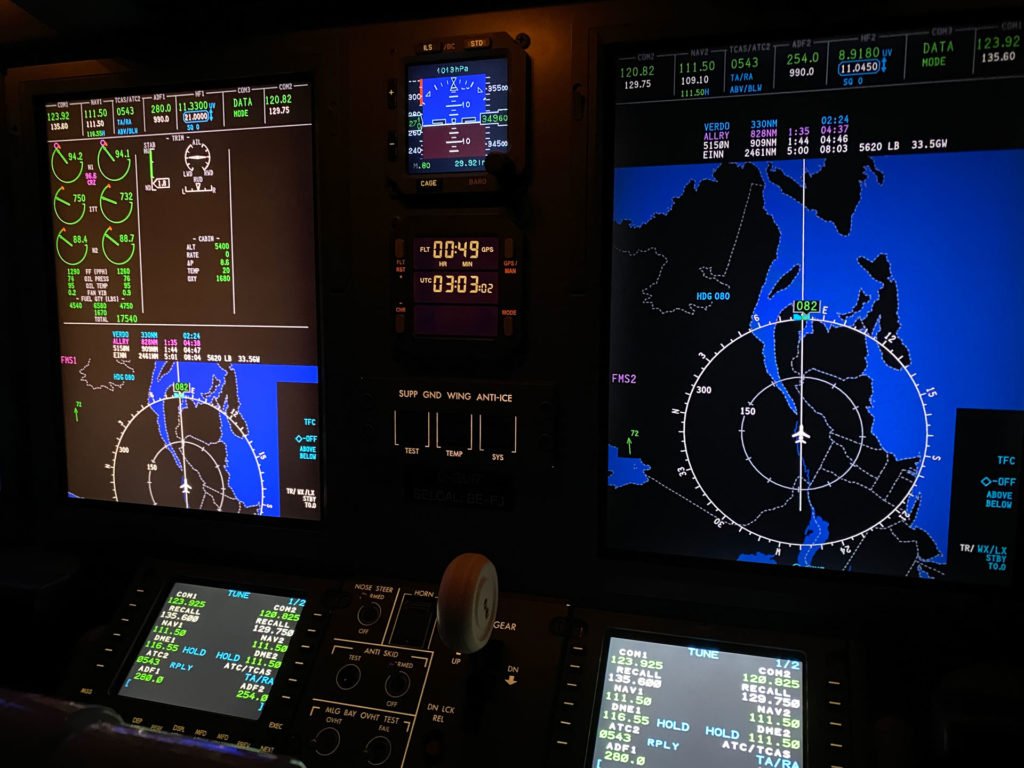Estimated reading time 11 minutes, 54 seconds.
From the inception of flight with the Wright Brothers in Kitty Hawk, North Carolina, aviation has been an industry interrelated with firsts: the first powered flight, first supersonic flight, first passenger jet… the list goes on. For pilots, there’s the first solo, first license, first flying job, first type rating… the nearly endless list of firsts become lifelong memories for a pilot.
But as a pilot’s career progresses, “firsts” are few and far between. Pilots covet new experiences, and start to measure new airports, new cities, and new countries as the yard stick of progress. As great as those memories can be, they pale by comparison with a first solo or first license. Those are experiences like no other.

But maybe you get lucky. Maybe, even as a seasoned pilot, you encounter a true first again, and the elation of accomplishment floods back. What may seem as mundane, and even inconvenient, to some pilots, is an entirely new beginning for others. It’s what makes working as a professional pilot so intriguing and uniquely individual.
On a beautiful fall evening in late September 2021 — nearly 22 years after completing my first solo and over 13 years after being hired into my first aviation job — I was fortunate enough to accomplish another major milestone… a first. It was the first time I had piloted an airplane across the Atlantic Ocean.
I have flown to all corners of North America and many islands of the Caribbean, setting foot in all 10 provinces and three territories in Canada, 48 U.S. states, and parts of Mexico. But flying above and across the open ocean was still left unexplored in my personal logbook.
When this trip first came into my schedule, there was excitement, followed by a reality check for what needed to be accomplished to fly the mission safely and legally. With private jet travel, we don’t have large teams of employees dedicated to the training, planning, and implementing required to complete these trips — as an airline would have. It’s left to me, the chief pilot, and the co-captain/director of flight operations to ensure we’ve done everything required for a positive outcome.

I asked a lot of questions! Fortunately, I have many great people in my life who are happy to answer questions, give advice, promote critical thinking, and walk through some important steps — well in advance of filling our Challenger 605 with Jet A and lighting the General Electric CF34-3B engines.
There are new technological terms — like FANS 1/A (Future Air Navigation System), CPDLC (Controller-Pilot Data Link Communications), and SELCAL (Selective Calling) — which are relatively unknown to most continental pilots. There’s new airspace to fly in, too, like NAT-HLA (North Atlantic High Level Airspace) or Oceanic FIRs (Flight Information Regions).
Travelling across the Atlantic Ocean requires specific training — provided by companies such as Flight Safety International — including CPDLC and FANS 1/A specific equipment training, and international procedures training. The International Civil Aviation Authority (ICAO) does not take safety and procedural training lightly, and neither did we. Due to Covid-19, the training we completed was web-based e-learning. The program depth was well beyond anything I had expected. There were approximately nine hours of interactive course instruction and a challenging exam for the international procedures course, alone.
What those courses did not prepare me for was the darkest dark on a moonless night; the amazing beauty of a moonrise followed by a sunrise over the Atlantic at 36,000 feet — just below the contrails of an American Airlines Boeing 777; or seeing nothing but blue on the navigation screen in the cockpit. We were so far away from human habitation, yet able to communicate easily with air traffic control (ATC) using a couple of easy keystrokes on the flight management system (FMS) and FANS 1/A.

FANS/CPDLC is an incredible piece of technology that connects ATC with pilots utilizing a network of VHF radio transmitters and satellites to enable continuous electronic communication throughout the entire Atlantic crossing. It makes requesting a change in altitude, speed, or heading seamless, and gives ATC a better level of control over a very busy airspace with no radar capabilities.
The thought of using FANS/CPDLC for the first time was a little daunting. The international procedures course prepares you for almost anything that can go wrong in communications, and provides the ICAO-produced contingency procedures for those events.
In reality and practicality, the normal events of a crossing are actually pretty simple.
First, the pilots must log onto the FANS/CPDLC-equipped ATC unit. With our route of flight going over the state of Maine (one of two U.S. states I have not yet visited, Hawaii being the other), and the FAA not currently equipped for continental CPDLC operations, our log on time came with the entry into the Moncton FIR (CZQM) at approximately 11:45 p.m. — after a 9:15 p.m. departure from Toronto.

There is a very brief time awaiting a successful log on, but once you’re in, any messages sent to the airplane from ATC will be alerted. A warning message on the pilot-side multi-function display (MFD) screen will illuminate with an audio tone and prompt the crew to review the message on the FMS. The pilots simply acknowledge the instruction with the push of a button and complete the action as required.
Next, there may be some VHF radio frequency changes, but the crew will request an oceanic clearance. This clearance was very likely in the initial IFR clearance received on the ground prior to takeoff. However, it can often be amended by ATC based on the amount of traffic crossing the ocean and altitudes, speeds, and times they are looking to enter the oceanic airspace. On my first crossing, our oceanic clearance was exactly the same as our filed flight plan and included the coast out waypoint, the assigned organized track, and the coast in way point. Coasting out (oceanic entry) and coasting in (oceanic exit) waypoints are generally positioned where VHF voice radio communications are easily restored with the ground-based ATC.
It takes less than 20 keystrokes to request oceanic clearance, but in this case, we provided ATC with our Flight ID, the facility we were requesting clearance from (Gander CZQX), the oceanic entry waypoint, Mach speed, and the flight level we would be crossing the oceanic entry point at. Once our oceanic clearance was received and acknowledged, we were cleared direct to the oceanic entry waypoint.

Logged on to Moncton CPDLC, with Gander next in the flight management system. Adam Fuller Photo 
The all-blue navigation multi-function display over the Atlantic Ocean. Adam Fuller Photo
One last check to complete as the aircraft enters the oceanic airspace is the SELCAL check. The check itself is very non-descript. It involves a call to the Gander Flight Service Station (FSS), on the provided primary high frequency radio, and presenting them with a discrete SELCAL code. In turn, Gander FSS will send a SELCAL alert to the aircraft.
We received the alert on the MFD, acknowledged the successful test, and removed our Bose Pro Flight Series 2 headsets, maintaining a monitoring watch of the pilot’s MFD in the event that ATC needed to contact the aircraft.
From that point until the oceanic exit point, which was a little over three hours for us, the FANS/CPDLC system worked almost entirely autonomously. Its job was to transition to the next FIR (Shanwick) and notify the crew of any changes to the routing, speed, or altitude. If there was weather or turbulence we wanted to avoid, we could request those changes through the FANS datalink on the FMS.
As the sun rose over the eastern horizon and the sky began to lighten, the vastness of open water in the North Atlantic was exposed, and we saw how remote we really were. About three hours after coasting out, we received an incoming datalink message to contact Shanwick on a VHF voice frequency at the oceanic exit, 220 nautical miles from our tech stop in Shannon, Ireland.

As we descended through the low cloud deck hanging over Southwest Ireland, the farm fields and quaint Irish villages came into view. The skies parted for our touchdown, but quickly closed in again, bringing in the rain — as any North American would expect of Ireland. Even though it was my first time standing in the tiny island nation, the airport looked like any other airport. But, unlike the cool, dreary weather, the service handlers were cheery and extremely helpful. They met us to fuel the airplane and provided our delicious Irish breakfast.
We did it! We had successfully completed another first — at least, for me. It was as exciting to me as the day I completed my first solo in British Columbia back in 1999.
I reveled in the moment of achievement, but then it was right back to business. After less than 30 minutes on the ground, uplifting nearly 3,700 liters (977 gallons) of fuel, we once again lifted off for our final destination in Italy. Climbing over the clouds of Ireland, Wales, and Southern England, we began to see the French coast with a clear view of Dieppe. Then came the Alps of France, Switzerland, and Italy, and the Mediterranean Sea, as we finished our flight in Tuscany.
At 44 years old, it’s been a life of dreaming, setbacks, and hard work, and wondering if it would ever come true for me — that is, to fly an aircraft across “the pond.”
I had accomplished another personal first.

In December 1903, Orville Wright flew the first powered flight for 12 seconds and covered 36 meters (120 feet). Just a few generations later, I had flown 3,735 nm over eight hours in just two segments. The magnitude of this dichotomy is not lost on me.
Our Challenger 605 is not the longest range, largest, or most technologically advanced business jet, but on that day, it was my chariot to complete this incredible first! To me, it’s the perfect memory of a lifetime.



Excellent first person account. You had us in the jump seat with you. Congratulations!
Congratulations Adam. Great story. Loved hearing about this first for you!